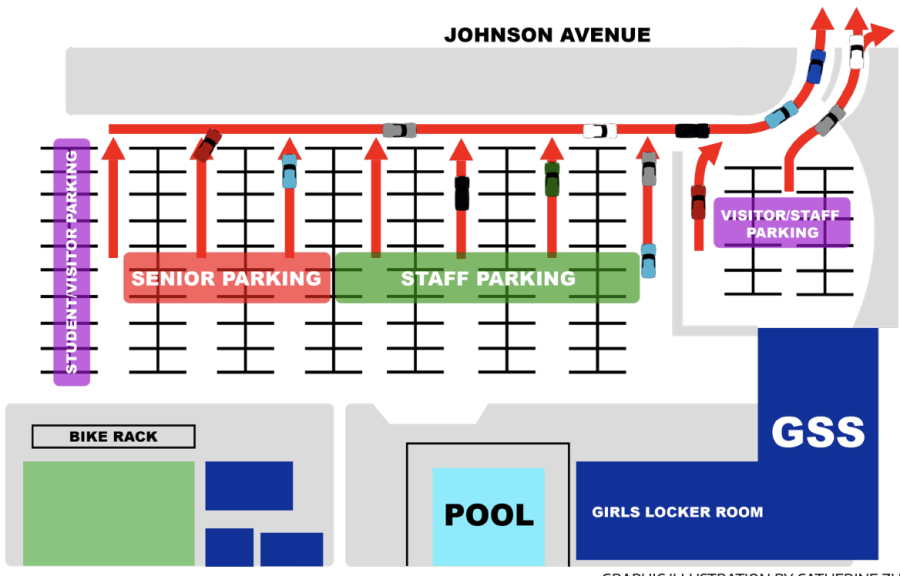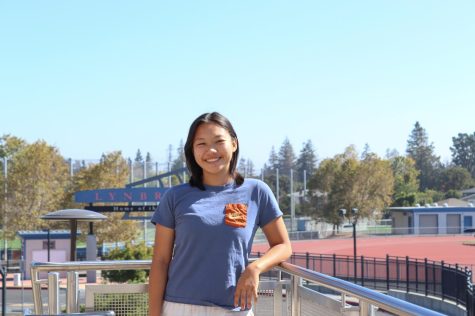Traffic congestion before and after school
Graphic illustration by Catherine Zhou
This is a map of traffic before and after school.
October 6, 2021
Traffic flow for student and parent drivers before and after school has changed due to Lynbrook’s 2020-21 campus construction projects. Crossing guards and other faculty help direct traffic before school, helping drivers, cyclists and pedestrians reach their destinations safely and efficiently. However, the student parking lot is often congested, especially right before or after school, with commuters trying to enter and exit.
In 2020, Lynbrook constructed a new roundabout near the art wing to create a loading zone, including a long path for drivers, so the flow of traffic never stops.
“The circle by the art corner has really helped with traffic because it’s another drop-off area,” Assistant Principal Susan Rocha said.
Due to construction for the softball and baseball fields, some student parking lot spots near the Guidance and Student Services building were reallocated for staff because the construction closed staff parkings lots behind Lynbrook. Similar to past years, students can acquire permit tags from ASB in order to park in the parking lot near the swimming pool.
For some students, the convenience that driving provides is often canceled out by the time it takes to enter the parking lot, so they park on roads in residential areas near Lynbrook. Junior Selena Yuan, for example, parks her car near a friend’s house to avoid heavy traffic.
“My friend’s house that I park at is closer than the parking lot,” Yuan said. “Recently, I’ve been noticing a lot of cars and cyclists entering there, too.”
Before school, crossing guards at the intersection of Rainbow Dr. and Johnson Ave. help direct traffic by having student pedestrians and bikers cross the street one large group at a time so that cars are not waiting for the constant trickle of singular students across the street. Crossing guards and other faculty in the student parking lot help direct cars to the loading zone at the entrance near the swimming pool so that traffic moves more quickly.
“We put up cones in the parking lot to help the flow of traffic, so parents don’t drop their kids off wherever they want,” Rocha said.
Unlike the mornings, there are no crossing guards after school, resulting in students crossing the street one at a time and cars being less courteous with each other. The administration decided not to have crossing guards after school because students are dismissed at times that vary more than when different students begin their school day. Also, the employees cannot work after school because that time overlaps with their workday.
Rocha recommends students walk or bike to school to relieve congestion in the parking lots or to use the newly constructed loading zone near the art wing, which usually has fewer cars. For students who live farther away, Rocha encourages students to arrive as early as 15 to 20 minutes before school starts to avoid traffic.



































































